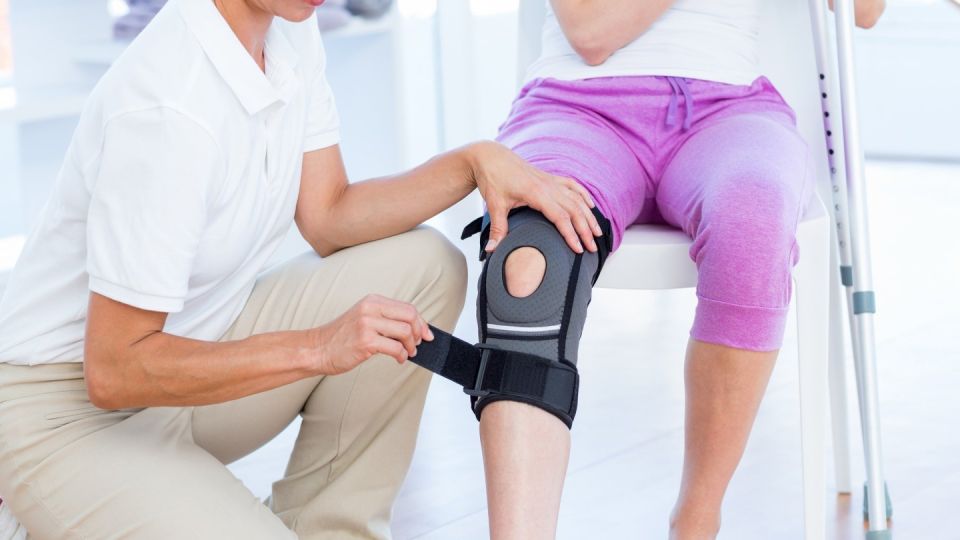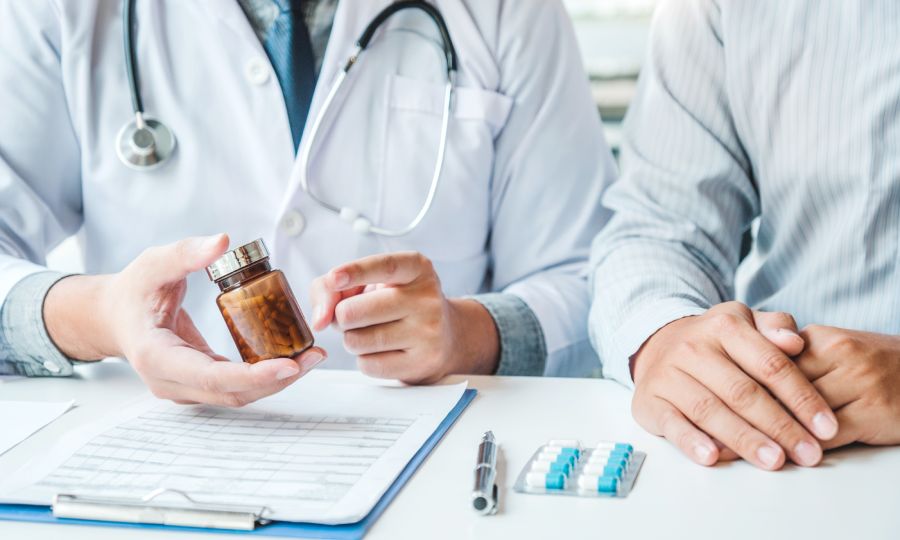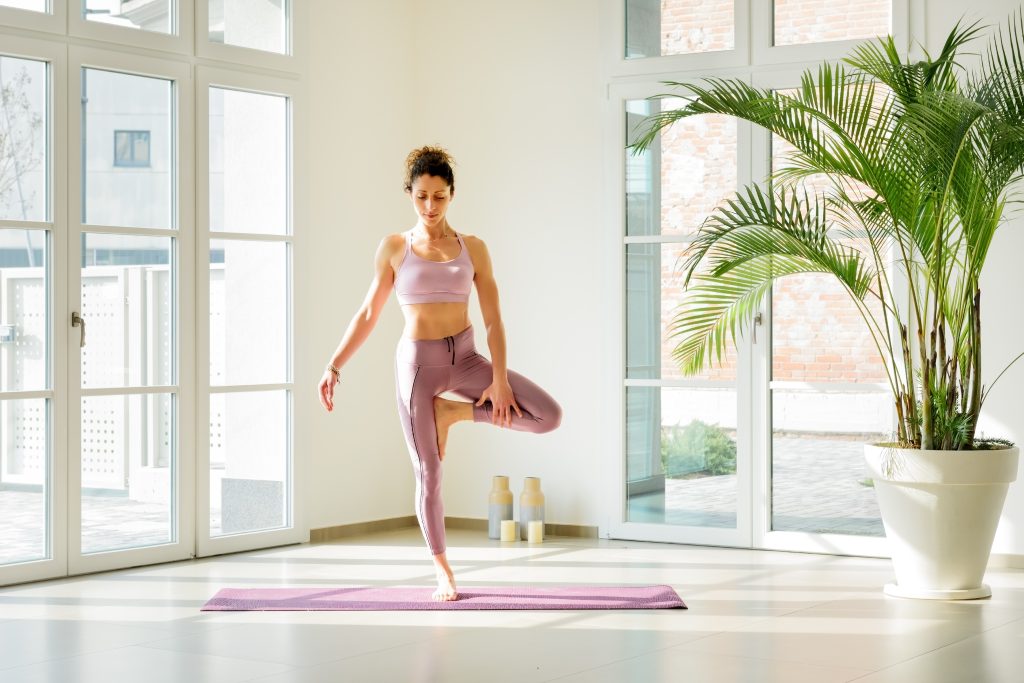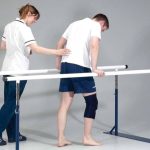Glad to see you in our blog! You are worried about the perspectivity of recovering from knee arthroscopy. You may feel anxious, especially if you do not know what to expect. But don’t worry, I am here to help you understand the process and ease your recovery journey, as well, I highly recommend you watching video exercises for recovery after knee arthroscopy that can help you in the process. Together, we can overcome all obstacles.
Understanding knee arthroscopy

What is knee arthroscopy?
Knee arthroscopy is a minimally invasive surgical procedure that is used to diagnose and treat problems in the knee joint. Using a small instrument called an arthroscope, a surgeon can view the joint and make the necessary corrections without necessity to make a large incision.
Causes and necessity of knee arthroscopy
Knee arthroscopy may be required for a variety of reasons. This can include meniscus sutures, cartilage damage, arthritis, osteoarthritis, or other conditions that can lead to pain, swelling, or limited mobility in the knee.
Knee arthroscopy may be required for a variety of reasons. This can include meniscus sutures, cartilage damage, arthritis, osteoarthritis, or other conditions that can lead to pain, swelling, or limited mobility in the knee.
Arthroscopy procedure: how does it work?
During the procedure, the arthroscope is inserted into the knee joint through small punctures in the skin. A surgeon then uses the instruments inserted through the other punctures to make the necessary corrections. The procedure is usually performed under general anesthesia, and a patient can usually return home the same day.
Early period of recovery after arthroscopy

What to expect immediately after the surgery
After knee arthroscopy, you will most likely feel some pain and swelling in the knee. It is normal and part of the recovery process. You may be prescribed analgesic and anti-inflammatory drugs to relieve discomfort.
First steps in the recovery
The first days and weeks after the surgery are important for your recovery. You should follow the recommendations of your physician and physical therapist to ensure the best outcome. This may include rest, raising the leg, applying ice, and doing simple exercises to improve blood circulation and maintain muscle tone.
Importance of monitoring the knee response to the surgery
Monitoring of your knee response to the surgery is a key step in your recovery. If you experience any problems, such as increased pain, swelling, erythema or heat in the surgical area, you should contact your physician immediately.
Physiotherapy and exercises after arthroscopy

Role of physical therapy in rehabilitation
Physical therapy plays a key role in the recovery process after knee arthroscopy. It helps to improve the mobility, strength and stability of the knee, reduce tenderness and swelling, and accelerate the return to normal life.
Initial exercises and their importance for recovery
Initial exercises may include mild stretching exercises, muscle tone exercises, and exercises to improve blood circulation. It is important to perform these exercises regularly and under the supervision of a professional physical therapist to avoid further injuries.
Here is a list of initial exercises that are usually recommended after knee arthroscopy. It is important to remember that every person and every case is unique, so you should always follow the recommendations of your doctor or physical therapist.
- Foot rocking
This exercise helps restore normal blood circulation and reduces the risk of blood clots.
- Sit or lie down, relax completely.
- Slowly and smoothly bend and extend your foot on a straight leg.
- Repeat 10 times every 1-2 hours.
- Quadriceps contraction
This exercise helps to strengthen the front thigh muscles.
- Lie on your back with your legs straight.
- Pull your knee together, bending your foot toward you and tightening your front thigh muscles.
- Hold the tension for 5 seconds, then relax.
- Repeat 10-15 times, 2-3 times a day.
- Contraction of the thigh muscles
This exercise helps to strengthen the back thigh muscles.
- Lie on your back with your legs straight.
- Pull the knee together, pulling the foot into the floor and tightening the back thigh m
- Hold the tension for 5 seconds, then relax.
- Repeat 10-15 times, 2-3 times a day.
- Inward and outward turns of the foot
This exercise helps to improve the mobility of the knee joint.
- Sit or lie down, relax completely.
- Rotate your foot inward, then outward.
- Repeat 10 times on each side, 2-3 times a day.
- Ball exercises for physical therapy
- Lie on your back with your legs bent at the knees and your feet on the ball.
- Slowly roll the ball back and forth, bending and extending your knees.
- Repeat 10-15 times, 2-3 times a day.
Remember that it is important to listen to your body while doing these exercises. If you experience pain or discomfort, be sure to contact your physician or physical therapist.
Planning and gradually increasing the intensity of exercises
As your knee recovers, your exercises become more challenging and intense. Your physical therapist will help you develop an exercise plan that will fit your level of recovery and overall health.
Video: “Rehabilitation of the Knee Joint”
Exercises for the knee joint. Set 4A is aimed at strengthening the muscles. Initial stage.
For additional information about the rehabilitation of the knee joint you can watch a video demonstrating exercises and rehabilitation recommendations.
Diet and lifestyle during the recovery period

Diet and its importance for knee recovery
A healthy diet plays a key role in the recovery process after knee arthroscopy. The nutrients we get from food help in tissue repair, reduce inflammation, support the immune system, and provide the energy needed for repair and rehabilitation. In addition, a sufficient amount of water helps reduce swelling and supports general health of the body.
Protein: It plays a key role in the growth and repair of muscles and other tissues. Protein-rich foods include meat, fish, eggs, dairy, legumes, nuts, and seeds.
Omega-3 fatty acids: These fatty acids are known for their anti-inflammatory properties and can help reduce pain and inflammation after surgery. Fatty fish (salmon, cod), nuts, flaxseeds, and olive oil are excellent omega-3 sources.
Vitamin C and zinc: These two nutrients play an important role in the wound healing process and tissue repair. Vitamin C can be found in citrus fruits, red and green peppers, kiwi, strawberries, and cabbage. Zinc is found in meat, seafood, nuts, and grains. These two nutrients play an important role in the wound healing process and tissue repair. Vitamin C can be found in citrus fruits, red and green peppers, kiwi, strawberries, and cabbage. Zinc is found in meat, seafood, nuts, and grains.
Calcium and vitamin D: Calcium is necessary for maintaining bone health, and vitamin D helps the body absorb calcium. Dairy products, green leafy vegetables, fatty fish, and fortified foods are excellent sources of these nutrients.
Vitamin A: Vitamin A helps maintain healthy skin and membranes, which is important for wound healing after surgery. Carrots, sweet potatoes, pumpkin, green leafy vegetables, and dairy products are all excellent sources of vitamin A.
Water: Adequate water intake is vital for all processes in the body, including recovery from surgery.
Importance of rest and sleep for recovery
Rest and sleep play a key role in the recovery process. During the sleep, the body activates tissue repair processes. Therefore, ensuring a good and adequate sleep can help accelerate the recovery process.
Impact of lifestyle on the recovery process
Your lifestyle can have a significant impact on the recovery process. Smoking, alcohol consumption and lack of physical activity can slow down the recovery process and increase the risk of complications.
Return to normal life after arthroscopy

When you can return to work and physical activity
Time to the return to work and physical activity depends on the type of your job and level of physical activity. This usually takes a few weeks to a few months. It is important to return to activity gradually and under the supervision of a physician or physical therapist.
Preparing to return to sports and training
Before returning to sports or training, it is important to make sure that your knee has fully recovered. This may require a series of examinations and tests performed by your physician or physical therapist.
Long-term knee care after surgery
After recovery, it is important to continue taking care of your knee health. This may include regular exercises to strengthen muscles, maintain a healthy weight, and avoid activities that can hurt your knee.
Conclusion
Rehabilitation after knee arthroscopy is of great importance. It is a process that requires patience, effort and commitment. The key to success is the correct approach, which includes taking care of your health, doing the recommended exercises and following your physician’s recommendations.
It is important to plan for the future and continue taking care of your knee joint, even after the rehabilitation process is complete. This will help to maintain the results achieved and prevent possible problems in the future.
Rehabilitation after knee arthroscopy is of great importance. It is a process that requires patience, effort and commitment. The key to success is the correct approach, which includes taking care of your health, doing the recommended exercises and following your physician’s recommendations.
It is important to plan for the future and continue taking care of your knee joint, even after the rehabilitation process is complete. This will help to maintain the results achieved and prevent possible problems in the future.

Check out the demo version of our sets of exercises for the Lower Limb Problems on YouTube
Our website presents the following sets of exercises for rehabilitation of the knee joint:
-
EXERCISES FOR THE KNEE JOINT. SET №3 IS AIMED AT STRETCHING THE MUSCLES (IMPROVING THE FLEXIBILITY OF THE MUSCULAR APPARATUS) AND INCREASING THE RANGE OF JOINT MOVEMENT
-
EXERCISES FOR THE KNEE JOINT. SET 4A IS AIMED AT STRENGTHENING THE MUSCLES. INITIAL STAGE
-
EXERCISES FOR THE KNEE JOINT. SET 4B IS AIMED AT STRENGTHENING THE MUSCLES. MID STAGE
-
EXERCISES FOR THE KNEE JOINT. SET 4C IS AIMED AT STRENGTHENING THE MUSCLES. ADVANCED STAGE



